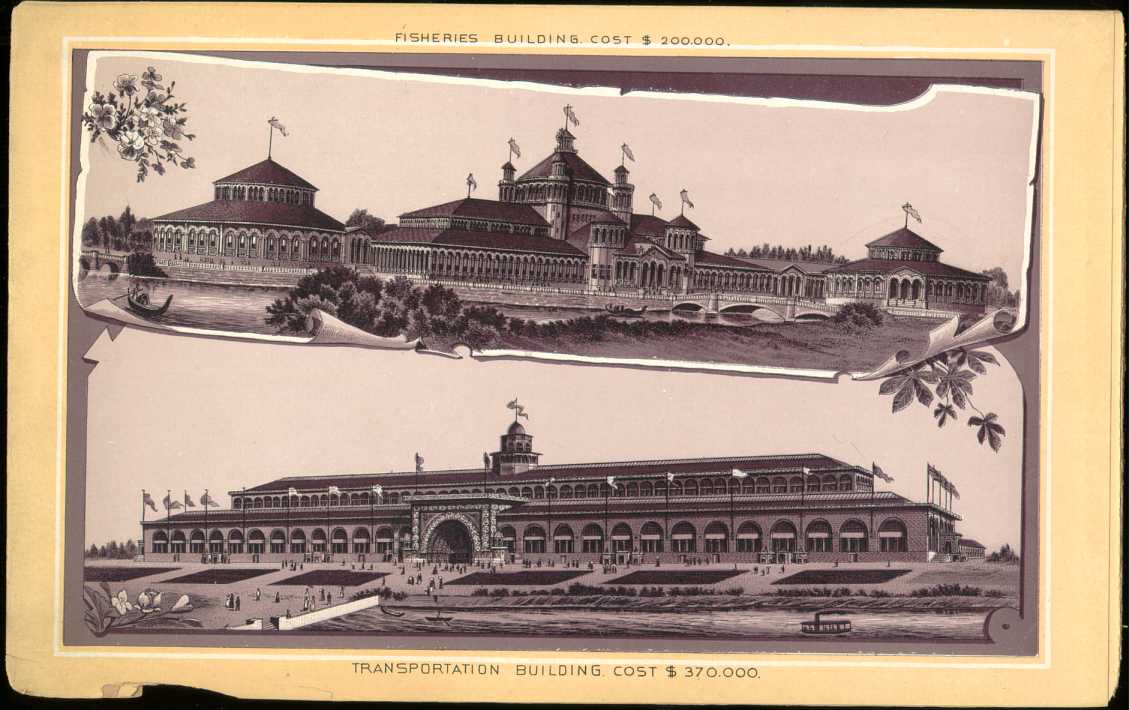| World`s Columbian Exposition at Chicago | ||
THE FISHERIES BUILDING.
It will be seen that each of the great industries of America is recognized by an individual Exposition building. That devoted to the Fisheries will be a striking novelty to the visitors from the interior states, with its large reservoirs and tanks filled with their living exhibit.
The plan is of a large central structure, with two smaller polygonal buildings to the right and left, corintcted with it by arcades. Its location is On tile water way which leads from the lake to the lagoon which surrounds the wooded island, and at whose month is the molt and the naval exhibit-a model of cruiser "Illinois," 70X350 feet. In the central section is the general Fisheries exhibit. One of the polygonal buildings holds the angling exhibit, and the other is devoted to aquaria. The exterior, of Spanish-Romanesque design, is covered with ornamental details of capitals, modillions, brackets and cornices, each modeled from fish or other sea forms. It is roofed with old Spanish title and is of pleasing color.
The polygonal building devoted to the aquaria is one hundred and thirty-five feet in diameter. In the center is a rotunda sixty feet in diameter, in the middle of which is a great basin or pool, twenty-six feet across, from which towers a moss and fern covered rookery. Streams of water pour from the crevices in the rocks and fall to a mass of reeds and ornamental aquatic plants in the pool below, where brilliant varieties of fish disport. A series of large tanks,—ten in number,—and possessing a water capacity of 7,000 to 27,000 gallons each, are arranged along one side of a great corridor or arcade, fifteen feet wide, and on the opposite side a line of smaller tanks, with a capacity ranging from 750 to 1,500 gallons each. The glass fronts of the aquaria contain 3,000 square feet of surface, and are in length 575 feet. The total water capacity of the tanks is 140,000 gallons. Forty thousand gallons of this is devoted to the marine exhibit, and requires a salt water reservoir and circulation of 80,000 gallons. The supply is received from the Wood's Holl (Massachusetts) station of the United States Fish Commission, where the sea water is evaporated to one-fifth its original bulk, thus increasing its density, which is restored to the original degree by the mixture of water from Lake Michigan.
One side of the larger tanks may be viewed from the rotunda, and passing out of this one reaches the corridor, with the double line of tanks, from which the opposite side of the larger tanks may be seen, and the second row of smaller ones. The general exhibit illustrates the pursuit and capture of all specimens of the finny tribe from the whale to the sardine, and also the manner of breeding and propagating the food and game fish.
| World`s Columbian Exposition at Chicago | ||
